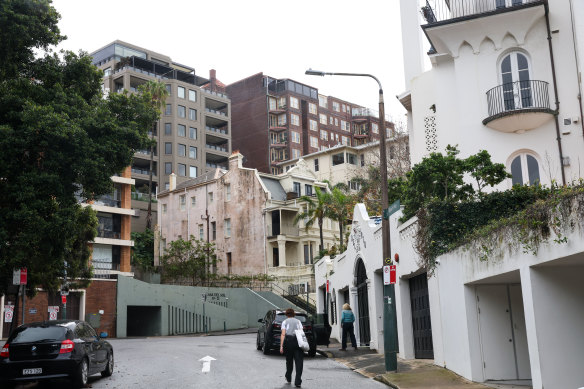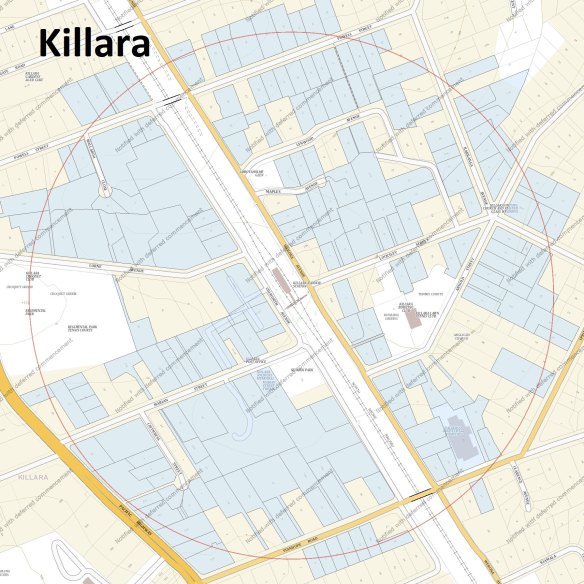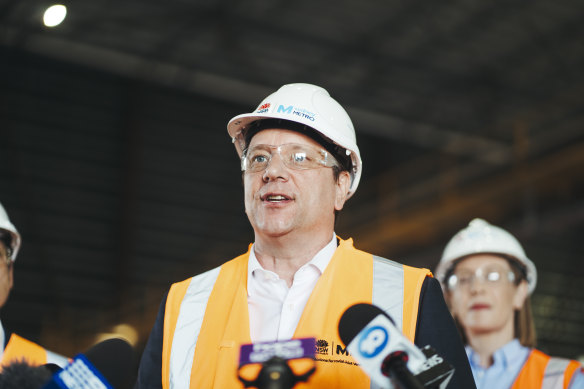The state government is using “magical” and unrealistic figures to describe the impact of its key housing policy, planning experts say, amid calls to spell out exactly how many homes the reforms are actually expected to deliver over the next five years.
Last week the government confirmed the start of new planning controls at 18 of 37 train stations under its transport-oriented development program. It previously said the program would “create capacity” for 138,000 more homes over 15 years but, after adding six more stations, now says the program is “projected to deliver” more than 170,000 homes over that period.

Elizabeth Bay has one of the higher densities in Sydney.Credit: Edwina Pickles
But the figures are based on a planning metric known as theoretical capacity, which describes the ultimate number of dwellings that could be built if all subject land was developed to the maximum allowed by the new zoning.
The policy applies to land within 400 metres of each train station, or about 0.5 square kilometres. For the 170,000 figure to be reached, each of the 37 precincts would have to build 4600 homes, on average, by 2039, resulting in density of 9200 homes or about 18,000 people per square kilometre.
That would make them some of the densest places in Sydney, which only has 53 square kilometres with a population density above 8000 people per square kilometre, which is defined as very high density by the Australian Bureau of Statistics.
Planning Minister Paul Scully defended the figures, which were derived using the Planning Department’s Development Capacity Model, as well as the claim the policy was “projected to deliver” that amount.

The Killara transport-oriented development zone.
He noted some of the 13 affected councils had promised to go above and beyond the minimum standard of six storeys the government had prescribed, “and our modelling has taken this into account”.
The level of density envisaged is possible. It is similar to Elizabeth Bay, which has about 16,500 people per square kilometre, in mostly mid-rise buildings with small apartments. It is similar to Wolli Creek, too, which has taller buildings but contains two large parks, meaning the housing is more concentrated.
But Planning Institute of Australia policy director John Brockhoff said the figures were “magical” and the theoretical capacity of the sites was “meaningless”. He said the government would have viability modelling that predicts likely yield based on assumptions about how the private sector would operate, and market conditions. “There are a lot of balls in the air,” he said.
Emeritus professor Peter Phibbs said it would be “a miracle” if the TOD sites achieved two-thirds of the theoretical capacity. But several precincts in regional areas were unlikely to generate anywhere near that maximum because people would rather buy a townhouse than an apartment.

Planning Minister Paul Scully has defended the figures.Credit: Dion Georgopoulos
“It’s good that they’ve upzoned [the sites] - that’s great, and it’s going to give a large amount of capacity in Sydney over a number of years,” Phibbs said.
“They’ll never get to that number because that would mean everyone in those areas would have to sell their [land]. They should clarify that, and they should give some estimates for what they think is going to happen in the next five years.”
The government is expected to do that by the end of June when it releases a regional plan for Sydney, Newcastle and Wollongong that spells out housing targets over the five-year period of the National Housing Accord for each region and council.
Several councils have been frustrated by the delay in issuing the targets, which will give a clear picture of what each local government area, including the TOD sites, is expected to produce.
The government declined to release modelling for the anticipated or maximum yield for each TOD site. At budget estimates earlier this year, it also refused to release those figures, claiming them as cabinet-in-confidence.
The difference between theoretical capacity and realistic capacity can be stark. A housing strategy prepared by Bayside Council in 2020 found the theoretical capacity of the area under its current planning controls was 23,873 homes, compared to a projected capacity of 16,609.
“Overall theoretical capacity assumes that 100 per cent of sites will be developed in the LGA. This is an unrealistic scenario as unknown constraints such as feasibility of redevelopment and landowner preferences means that not all sites will be re-developed,” the document said.
“Projected capacity starts with the overall theoretical capacity figure and assumes that 75 per cent of sites zoned for high-density development would be developed and 50 per cent of sites zoned for medium- and low-density development would be re-developed.”
Start the day with a summary of the day’s most important and interesting stories, analysis and insights. Sign up for our Morning Edition newsletter.